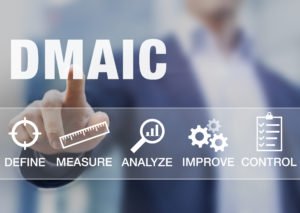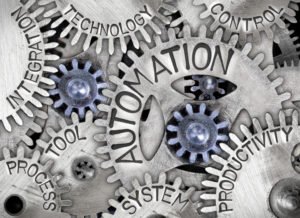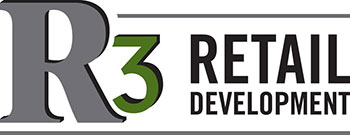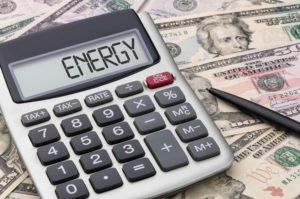It’s one thing to implement energy efficiency projects but creating a sustainable energy efficiency program is an entirely different matter.
Imagine that your organization has a long-standing commitment and strategy in place for energy conservation. You completed the first group of projects last year. As you prepare to submit your budget request for next year; you look back at the completed projects’ performance.
Shocked by the findings? Has the new equipment failed? Why would the energy consumption increase to pre-project levels in just a few months?
The answer may lie in how well your project stakeholders accepted and embraced the change.
Sustaining energy efficiency, like any other change initiative, relies on the entire team for success. For multi-site retailers, generating store-level buy-in can be challenging. Applying a process improvement approach to sustainable energy efficiency projects helps focus store-level implementations increasing the probability of sustained success.
The Six Sigma DMAIC methodology has been highly noted as a practical approach to project implementations. Closely aligned with the widely accepted project management body of knowledge (PMBOK), Six Sigma DMAIC takes the project management process up a notch. To read more about the similarities and differences between DMAIC and PMBOK click here.
The Process Improvement Lens
Utilizing Six Sigma’s DMAIC (define, measure, analyze, improve, control) for multi-site retailer projects provides for a robust set of tools that when
Combining Six Sigma with Lean and TQM methodologies creates a continuous improvement model for projects. This approach increases your projects’ success, prolongs sustainability and alleviates potential issues.
Let’s examine the difference in project approach using a Process Improvement Lens. The five phases of traditional project management are Concept and Initiation, Planning, Execution, Performance/Monitoring, and Project Close. Using DMAIC, we add defined steps for measuring and analyzing and we continue the evolution of the improvement efforts, rather than closing the project.
Multi-Site Retailers’ Sustainable Energy Efficiency
For multi-site retailers, it is not enough to apply these methodologies at the executive level when you develop or design your sustainable energy efficiency program. The DMAIC methodology needs to flow to the individual retail location level to create sustainable energy efficiency.
If you are like many retailers, you may think that once the program is developed that all you need at the store level is a site assessment to get started.
Find out what we have, what we need and “get it done”?
If you follow that mindset the likelihood of creating sustainable energy efficiency diminishes.
Applied DMAIC Tools
 Communications Plan
Communications Plan
Like PMBOK best practices, creating a comprehensive communications plan is an essential ingredient to successful DMAIC projects. Involve the store level stakeholders early in the process. This collaboration identifies design elements, communication and training pathways and generates buy-in.
- With the facility/maintenance team discuss the long-term feasibility of maintaining the equipment and system integrity.
- Discuss with store-staff what works well and what is not working so well with their current controls system or processes.
- Talk with the maintenance vendors to find out about issues they haven’t been able to resolve and challenges they encounter.
Collaborative communication combined with measure and analysis alleviates potential barriers like overrides, setpoint changes, or leaving the freezer open. These things potentially skew your ROI and reduce the effectiveness of your sustainable energy efficiency program.
Measure and Analyze
Measure and Analyze distinguish the DMAIC approach from the PMBOK approach. At the store-level, through effective communication, we define, then map (measure) the store’s and service vendor’s existing processes. Analyzing the existing processes and behaviors enables us to address potential barriers to sustaining the energy efficiency program. Frequently culprits of system degradation originate from avoidable user interactions with the system.
Is the freezer door propped open during stocking?
Does the store staff hit the cooling override every afternoon?
Are the staff overriding the lights every morning?
Why do service techs override sensors?
Is PM being deferred in some areas?
Store staff and Service Vendors do not just arbitrarily create overrides or bypasses. There is a reason behind those behaviors.

User Training
User training, a standard project deliverable, traditionally falls within the “control” or project close-out phase. Staff and vendor education promote sustainable energy efficiency; starting in the define phase and continuing throughout the project with effective communication then ending in the control phase with training.
Store-level training throughout the project helps staff and vendors understand the goals, objectives and the strategy. Understanding the logic, reasoning, and goals create system allies and strengthen the probability of long-term system integrity.
Store Staff Training
User Education is not just showing the store staff how to use the equipment. Staff training helps increase buy-in through sharing information on how the program works. When staff understands the goals and strategy behind the energy efficiency program they become one of your strongest allies ensuring sustainability. System understanding diminishes the probability for overrides and setpoint changes.
Service Vendor Training
Service vendors typically need minimal hands-on training. Center training around nuances specific to your organization. Explain how the system works with applicable monitoring programs, the specific energy conservation strategies and who to contact if they have any issues. Successful, sustainable energy efficiency projects and programs rely heavily on service vendors.
 Maintaining Sustainable Energy Efficiency
Maintaining Sustainable Energy Efficiency
Looking at your projects and programs through a process improvement lens like Six Sigma DMAIC can take your efforts up a notch creating sustainable value and ongoing energy conservation. Watch for our upcoming eBook with in-depth information about Sustainable Energy Efficiency through a Process Improvement Lens.


